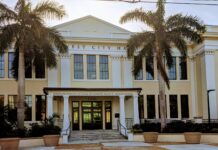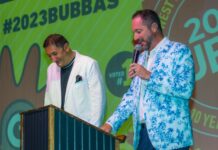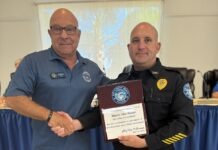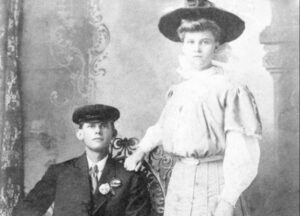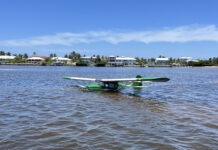James Taylor was responsible for the title of this week’s column. Someone who is mostly associated with the acoustic guitar, James now and again picks up a Fender Telecaster electric guitar to play songs like “Steamroller.” He makes a joke about the electric guitar as a modern device, an upgrade from the steam-powered guitar, and certainly better than the wood-burning one. (The old jokes are the best.)
Although the acoustic guitar is my first love, I have often — like Dylan in the mid-1960s — gone electric. There is nothing quite so powerful as hitting a big open jangly chord into a clean Fender tube amplifier, or chugging power chords and leads into a cool pedalboard and Marshall half-stack. And electric guitars (as a rule) are far easier to play than acoustics — lower action, slinkier strings.
How did this instrument that changed music come to be? It all actually started with jazz guitarists. Big bands and jazz ensembles typically had a guitarist to (mostly) play rhythm and keep time with chords underneath the louder instruments (mostly horns and drums). The preferred jazz guitar was a big hollow-bodied archtop designed to maximize the guitar’s acoustic volume. Still, it was nigh on impossible for a jazz guitarist to play single-note passages and leads.
Then came the magnetic pickup. Surround a magnet with a coil of copper wire, and the vibrating strings will be picked up by the magnetic field and turned into electrical impulses in the copper wire coil. Some of the earliest pickups were from the Gibson guitar factory; they are still referred to as “Charlie Christian pickups” after the jazz guitarist who helped popularize their use. (They are still available today.) Connected to an amplifier, jazz guitarists could compete with the volume of horns for leads and single-note runs.
The Charlie Christian pickup used a magnetic bar (or blade) in the center of the coil. Fender and Gibson experimented with individual magnetic polepieces that would sit under each string. Gibson took things a step further by combining two pickup coils into one pickup — this “humbucking” pickup had a higher output and a mellower tone, while also canceling any radio frequency interference or hum that could be picked up by a single-coil. With some exceptions, these are the same types of electric guitar pickups that still power today’s instruments.
While the hollow-body archtop jazz guitar could be easily heard, it was often prone to feeding back at higher volumes. In 1945, Les Paul designed a solid-body guitar for Gibson nicknamed “The Log.” At the time, Gibson didn’t release his prototypes. Five years later in 1950, Fender introduced the first production solid-bodied guitars — the Esquire and the Broadcaster, which became the Telecaster after a trademark dispute over the Broadcaster name. The Esquire had one pickup, but the Telecaster had two: one near the neck and the other near the bridge. In 1952, Gibson did release its own two-pickup solid-body, the Les Paul model.
In 1954, Fender (founded by namesake Leo Fender) released one of the most popular electric guitars ever, the three-pickup Fender Stratocaster. Its comfortable contoured body and variety of single-coil tones made it one of the most popular musical instruments ever, played by artists like Buddy Holly, Bob Dylan, Jimi Hendrix, Eric Clapton, Jeff Beck, David Gilmour, Mark Knopfler, Buddy Guy, Robert Cray and so many more. The Stratocaster is my personal favorite electric guitar as well.
All these years later in 2023, most electric guitars are just variations on the original hollow-body and semi-hollow archtop guitars from Gibson, as well as the Telecaster, Stratocaster and Les Paul. There are no shortages of new Fender and Gibson instruments, and original vintage guitars from the 1950s and 60s can easily command six and seven figures on the market. I think I’ll strap on a Stratocaster, plug it in and make some glorious noise!
– Catch John live Wednesdays at Brutus Seafood, Thursdays at Sparky’s Landing, Friday with Jade Storm at Lorelei, and Sunday at the Skipjack Resort Tiki Bar. Find his music anywhere you download or stream your music. www.johnbartus.com • johnbartus.hearnow.com
